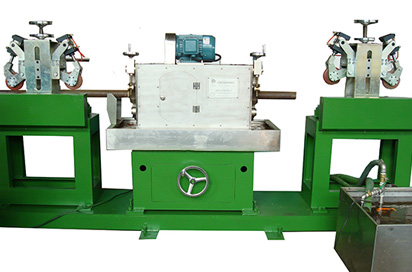
Ultrasonic flaw detectors are vital tools in the field of non-destructive testing (NDT). Designed to assess the integrity of structures and materials, these devices employ the principles of ultrasonic waves to detect and locate defects that may otherwise remain hidden. In this article, we will delve into the working mechanism of an ultrasonic flaw detector, shedding light on the fascinating world of wave analysis.
Before we dive into the intricate details of ultrasonic flaw detectors, let's familiarize ourselves with these devices. Ultrasonic flaw detectors are portable instruments that generate high-frequency sound waves and analyze their characteristics to identify flaws and anomalies in materials and structures. By emitting ultrasonic waves into a test object and then analyzing the echoes that bounce back, these instruments enable us to detect hidden cracks, voids, and other defects.
At the heart of an ultrasonic flaw detector lies the transducer, which emits and receives ultrasonic waves. Upon activation, the transducer produces a burst of high-frequency sound waves that travel into the material being examined. Upon encountering a discontinuity, such as a crack or a void, the waves partially reflect back towards the transducer. The ultrasonic flaw detector then analyzes these returning waves to determine the size, location, and characteristics of the flaw.
The primary focus of an ultrasonic flaw detector working is to analyze the properties of the returning waves. It is crucial to understand the various factors that influence wave behavior and how they can help identify and evaluate flaws accurately. Key parameters include amplitude, time-of-flight, and frequency. Analyzing these parameters allows us to distinguish between echoes from genuine anomalies and those caused by material variations or irrelevant features. By employing advanced signal processing techniques, modern ultrasonic flaw detectors, developed by leading ultrasonic flaw detector manufacturers, can provide detailed wave analysis, enhancing the precision and reliability of flaw detection.
Ultrasonic flaw detectors find applications across a wide range of industries. They are extensively used in manufacturing, construction, oil and gas, aerospace, and many other sectors. These instruments are employed for flaw detection in metals, welds, composites, ceramics, and other materials. By identifying flaws and defects early in the manufacturing or maintenance process, ultrasonic flaw detectors help ensure the structural integrity of components and prevent catastrophic failures.

In conclusion, understanding ultrasonic flaw detector working functionality is essential for those involved in non-destructive testing. By utilizing the principles of wave analysis, these devices enable us to detect and assess hidden flaws in various materials and structures. Whether it's inspecting welds in pipelines or evaluating the integrity of critical aerospace components, ultrasonic flaw detectors play a crucial role in maintaining safety and quality standards. So the next time you encounter an ultrasonic flaw detector, remember the intricate workings happening behind the scenes, analyzing waves to bring hidden flaws into the light.

